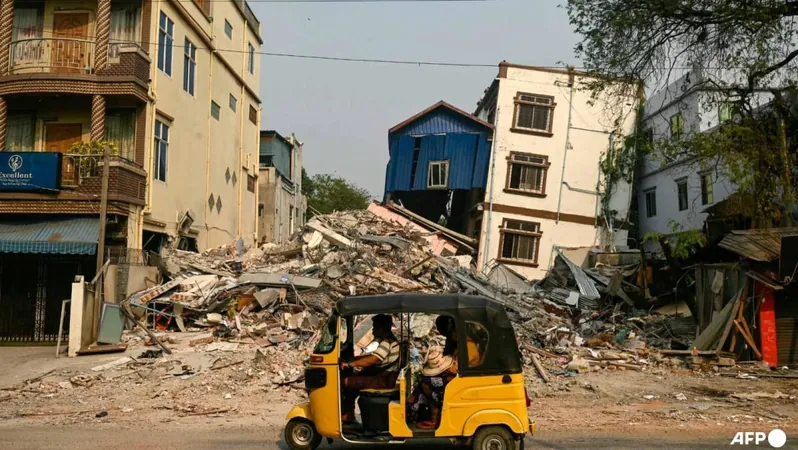
Myanmar Faces Dire Aftermath of Deadly Earthquake: Over 3,000 Dead and Disease Outbreaks Loom
2025-04-03
Author: John Tan
In the wake of a devastating 7.7-magnitude earthquake that struck Myanmar last Friday, the country is grappling with an alarming death toll that has now surpassed 3,000, while thousands more are injured or missing. This earthquake, one of the most powerful in the region in a century, has left entire communities in ruins, with reports of collapsed hospitals and widespread destruction affecting approximately 28 million residents.
As the death count has reached 3,085, with 4,715 injured and 341 still unaccounted for, humanitarian organizations are sounding the alarm about the increased risk of diseases, particularly among survivors forced to live in makeshift outdoor camps. The World Health Organization (WHO) has warned of potential cholera outbreaks, emphasizing the urgent need for aid as they prepare to deploy $1 million worth of relief supplies, including essential medical items like body bags.
Elena Vuolo, the deputy head of WHO's Myanmar office, highlighted that the conditions are particularly precarious in the hardest-hit regions such as Mandalay, Sagaing, and Naypyitaw. The destruction of nearly half of healthcare facilities in these areas, including critical hospitals, has significantly hindered medical response efforts. Survivors are braving extreme temperatures of 38 degrees Celsius, reluctant to return to damaged homes.
Adding to the crisis, weather officials have predicted unseasonal rains that could exacerbate the situation as they are expected to hit from April 3 to April 11, intensifying the plight of those living in temporary shelters. Titon Mitra, the United Nations Development Programme representative in Myanmar, stressed that further rainfall could lead to significant issues for the many individuals currently living in makeshift camps, as the risk of waterborne diseases looms large.
Meanwhile, Myanmar's ruling junta chief, Min Aung Hlaing, is facing significant scrutiny as he plans to attend a regional summit in Bangkok amid the chaos back home. His visit, seen as controversial due to international sanctions and human rights violations linked to his regime, raises questions about the government’s priorities during a national humanitarian crisis.
In an effort to facilitate relief efforts amidst ongoing civil strife, the military government announced a unilateral ceasefire intended to last 20 days. This comes as various rebel factions have also declared similar ceasefires in hopes of facilitating humanitarian access to affected populations. Nonetheless, the ongoing civil war complicates the distribution of aid, as many areas remain challenging to reach.
Tragically, while Myanmar is in crisis, neighboring Thailand is dealing with its own disaster aftermath following the collapse of a skyscraper in Bangkok, resulting in at least 22 fatalities and 72 people still missing. Authorities are working tirelessly to sift through the rubble in search of survivors.
As Myanmar grapples with the dual crises of natural disaster and political instability, the international community watches closely, hoping for a swift resolution that prioritizes the wellbeing of the nation’s most vulnerable populations. The situation remains fluid, and the need for immediate humanitarian assistance has never been more urgent.





 Brasil (PT)
Brasil (PT)
 Canada (EN)
Canada (EN)
 Chile (ES)
Chile (ES)
 Česko (CS)
Česko (CS)
 대한민국 (KO)
대한민국 (KO)
 España (ES)
España (ES)
 France (FR)
France (FR)
 Hong Kong (EN)
Hong Kong (EN)
 Italia (IT)
Italia (IT)
 日本 (JA)
日本 (JA)
 Magyarország (HU)
Magyarország (HU)
 Norge (NO)
Norge (NO)
 Polska (PL)
Polska (PL)
 Schweiz (DE)
Schweiz (DE)
 Singapore (EN)
Singapore (EN)
 Sverige (SV)
Sverige (SV)
 Suomi (FI)
Suomi (FI)
 Türkiye (TR)
Türkiye (TR)
 الإمارات العربية المتحدة (AR)
الإمارات العربية المتحدة (AR)